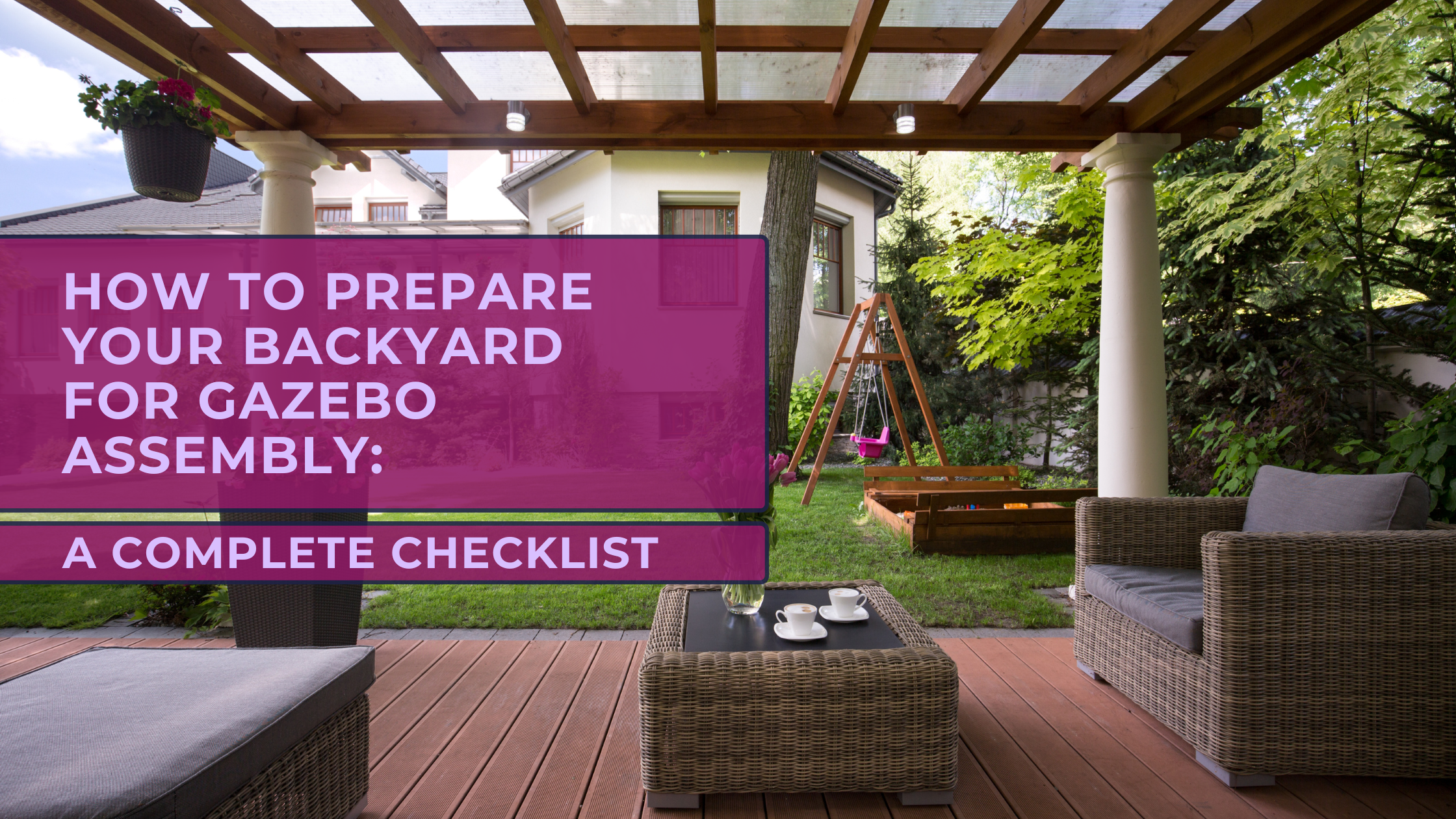To have a successful installation of a gazebo in your backyard, some considerations need to be taken into account. Want to get your outdoor area ready? Here are the steps to complete, from the evaluation stage to the selection of the location.
Assessing Your Space: Measuring and Planning for Your New Gazebo
Measuring
To start with, gazebo assembly preparation, decide on the area to place the gazebo, taking into account restrictions and imitations. With the measuring tape, take measurements of the length, width, and height over the area you want the gazebo to fit to ensure that the dimensions of the gazebo will suit the available space.
Create a layout plan
Once you have dimensions, draw a simple spatial plan on paper or use garden planning software to draft it out; think about what you want around the gazebo, such as seating, lighting, or walkways.
Confirm local regulations
It is noteworthy to note that gazebo installations might be bound by local codes and regulations. Some cities or homeowners’ associations may have permits or special requirements if you are to put up a permanent structure. Checking these rules in advance will enable you to avoid any legal problems or inconvenience.
Recognizing risk factors
Does this region have utilities such as telephone, electricity, water, and cables; are there trees and sprinkler systems around? Second, pay particular attention to the soil topography—note slope and drainage; these will affect the stable orientation of the gazebo.
Clearing the Area: Essential Steps for a Smooth Assembly Process
After choosing the right site, the ground preparation cleared and leveled in order to come up with a strong and firm base for the gazebos you choose. Here is the outdoor space checklist.
Rake and Clear Lawn Furniture
Empty the space of anything that is not needed, like furniture, outdoor decorative items, toys, or gardening tools.
Cut short any plants or shrubs near the house
You also should trim other plants you may have, such as shrubs, trees, etc., if they are close to the area you want to build the gazebo on.
Level the ground
A level base is necessary to maintain strong stability for the building of gazebos. Assess the ground alignment using spirit level or line level and apply needed correction by filling the low levels or compacting the high points. In some cases, it may also be advisable to create a more permanent base by pouring concrete or constructing a wooden platform.
Address drainage issues
Since water in the backyard is usually a problem of water in some areas, ensure that the area where the gazebo is to be placed is well drained. Water stagnation can lead to problems such as mold, rot, and decaying of the structure of a gazebo after some time. If necessary, make provision for proper drainage that simply involves the laying of gravels, soils, etc. in order to ensure that water is drained away from the site.
Prepare necessary tools
Collect all the tools and keep them within reach during the setup process to make going through it a lot easier.
Choosing the Right Location: Factors to Consider for Optimal Enjoyment
Consider sunlight and shade
Shelter: gazebos are wonderful structures for shade, but the placement should improve your time outside. For that backyard planning is essential. And location, which is where you will fix your gazebo, should also be able to get moderate shade all day, especially during the hottest part of the day.
Think About Privacy
If you wish to have a personal space for your gazebo, then make sure that it is located where it cannot be seen from neighbors or the street. However, privacy can be enhanced physically by growing plants, hedges, or installing a privacy screen after construction of the gazebo.
Check wind exposure
A good place to assemble a gazebo should be an area that protects from rain; therefore, it should not be situated where there are heavy winds blowing. Too much of it can make your outdoors less appealing and may, over time, have implications for the sturdiness of the structure.
Ensure Accessibility
site accessibility to your house prevents them from being too far from the house, especially if you intend to have dinner or a party under the gazebo. Also, it is important to position it near existing structures such as patios, fire pits, and so on in order to complement current landscape design.
When deciding on your backyard and deciding where to put your new structure, ensuring you measure it properly and choose the site you are going to be assembling the structure on not only makes it easier to assemble in the future but will also guarantee that you will be adding a comfortable and functional space for years to come.







